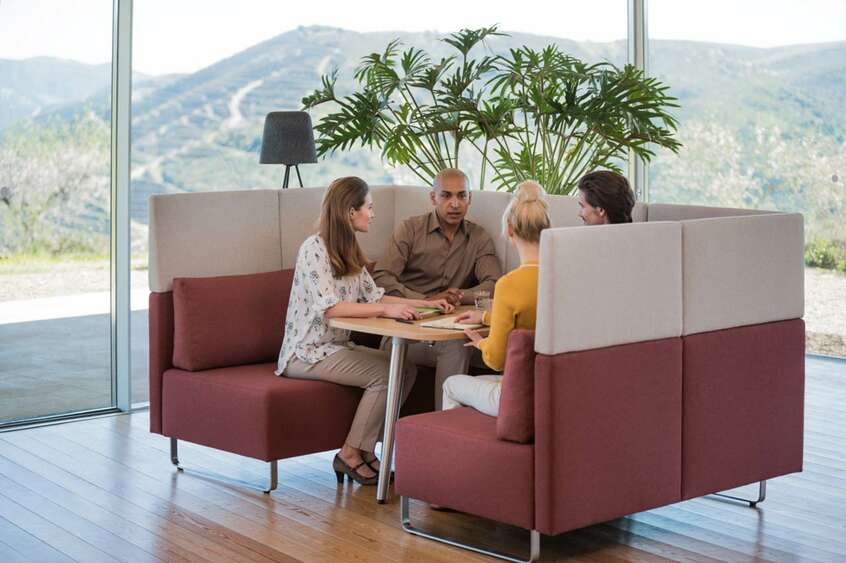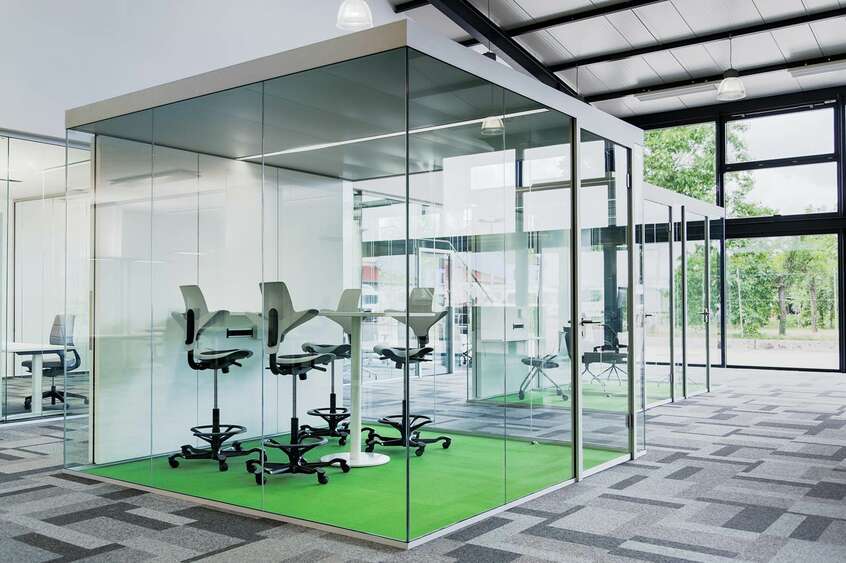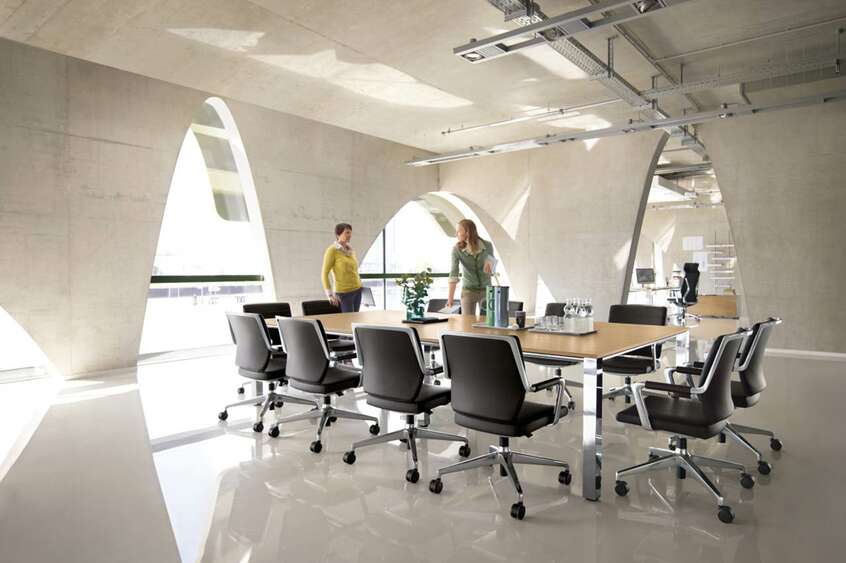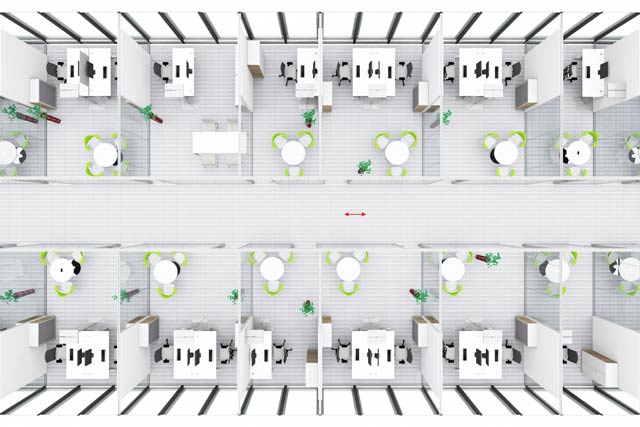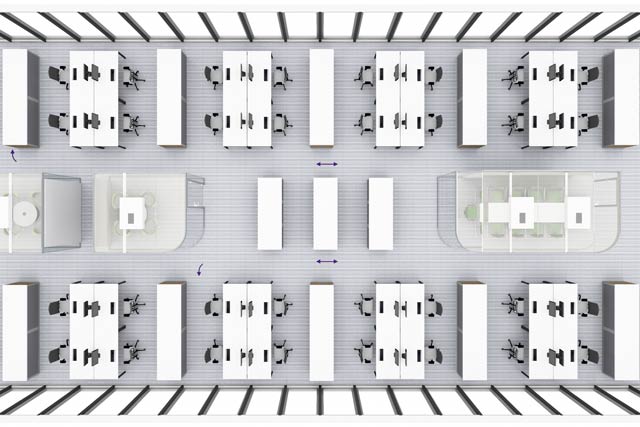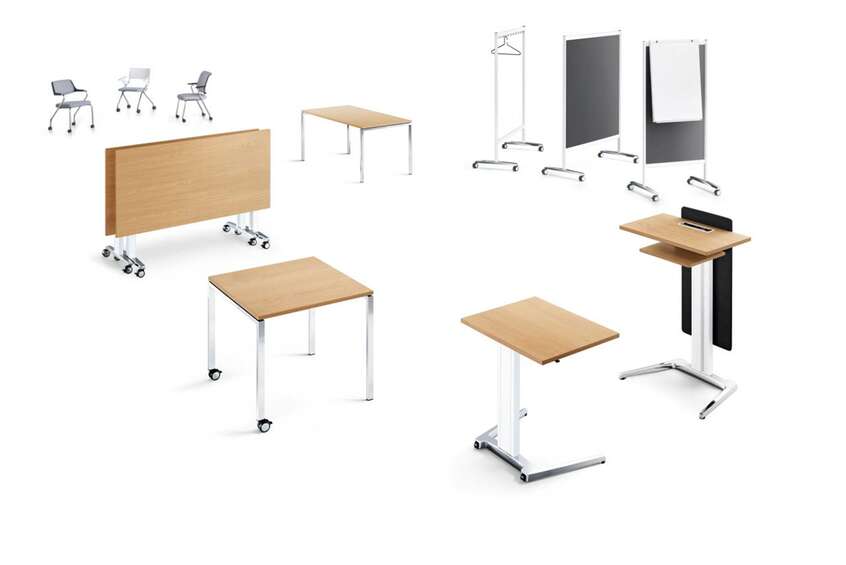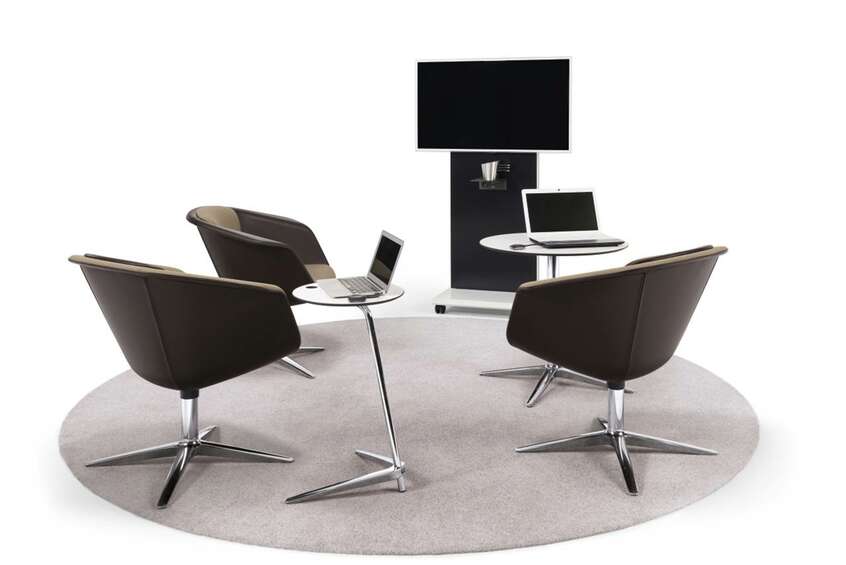
Focus: optimisation of existing spaces, agile office, hybrid working, when the office becomes a club
Hybrid working
Today more than ever, the focus is on revamping existing office spaces. In the past, it was often about utilising the space as effectively as possible, but now it is primarily about making the space interesting and exciting so that employees enjoy coming into the office to interact with each other. The home office is now an integral part of our working culture and is likely to remain so. However, the home office cannot replace the office as a shared home base. Corporate culture, team spirit, creativity, new and further developments are not the brainchild of individuals. They require close collaboration and intensive dialogue with colleagues. Consequently, it is essential to bring employees together as often as possible in such a way that they also have the opportunity to work as a team and interact with each other. A hybrid model consisting of home office and office work is the aim.
Occupancy of the areas
Now imagine your company still uses the traditional cubicle office. Let's outline what this means for your company: 40% of employees are working from home (about 2 out of 5 days). Add to that vacationers, sick people, and business travelers. That's another 20 to 30% of your team. So, rarely more than 30 to 40% of your colleagues are on site. Let's play it safe and assume 50%. Employees are now spread across the existing 100% office space and use the workstations assigned to their time in their cubicles. This means that employees will once again be sitting alone in the office, just as they sit alone in their home offices at home. How can encounters, teamwork, interaction, and communication arise there? But that's exactly what you absolutely need to be creative and stay competitive. That's impossible with existing systems. Your employees could also stay at home 5 days a week and work in isolation from there.
Office space costs:
Aside from the ineffective collaboration, the costs of office space are comparatively high. Who wants to pay for space they don't even need? Space consolidation is becoming increasingly important. Here are a few figures: Let's assume your company employs 1,000 people in the office. At the time, you planned for 30 m² of gross floor area, i.e., rental space per employee. Incidentally, the space per employee is often significantly higher. Based on the above figures, you currently have 30,000 m² of office space.
You pay approximately €22.00 per m² per month. That's €7,920,000 per year.
Consolidation of office space:
The desire to adapt the space to current needs—according to our model, it could be halved—stems from two ideas. On the one hand, it's the desire for more presence, more communication, and consequently, more effective processes. On the other hand, as a responsible business owner, you have to get rid of the excess space. So what could be more logical than to take a closer look at the cost of such a cultural change, including the necessary renovations?
After all, these costs would be offset by savings of €3,960,000 per year.
The new model
We are adopting a new working model. The space will be halved. Room structures will be reduced to create open work areas. The office space will be designed in an open manner. Transparency, direct visual connections, and encounters will be the focus. The office will become agile. The necessary workstations will no longer be assigned personally, but can now be booked. The central zone will be used for communication. Areas along the facade will largely be reserved for workstations and will be more concentrative. A variety of spatially and acoustically distinct zones will offer specialized workstation areas that employees can access on demand and according to their respective activities. This will create an open, inviting atmosphere that ensures that employees who are present also meet one another. Soundproof but transparent retreat areas will support communication and creativity. Employees can meet here and interact freely without disturbing their colleagues at their workstations.
The conversion
Let's assume that you don't need to make any significant structural changes. All walls will be removed. The carpet will be replaced. The ceiling will be replaced or completely removed. The technical equipment behind the ceiling could possibly be attractively designed. An open, inviting, and modern loft office could be created.
Construction costs for a 5,000 m² agile office
Dismantling and replacing the acoustic ceiling: 15,000 m² x 150 €/m² = 2,250,000.00 €
Dismantling doors: 500 employees in two-person offices = 250 offices, i.e. 250 doors at 50 €/door = 12,500.00 €
Dismantling walls: 250 x 11 linear meters of wall, height: 3.5 m = 9,625 m² at 30 €/m² = approx. 288,750.00 €
Replacing carpet: 100 x 5,000 €/m² = 500,000.00 €
Total conversion costs: 3,051,250.00 €
Workstation with table, chair, storage, and floor lamp: 3,800.00 €/apt * 500 employees = €1,900,000.00
Retreat rooms or special areas: 1 for 10 employees = 50 * €15,000 = €750,000.00
Total equipment: €2,650,000.00
Total project: €5,701,250.00 -> The renovation will pay for itself in the second year.
Office planning is responsible for the company's success
The advancing digitalization, but also megatrends from other areas of life, are constantly influencing the planning, design, and organization of the office environment. Digitalization, as well as the development of the trends described in more detail below, are ongoing processes. As a result, planning must also be an ongoing process. The resulting office landscape must be flexible enough to respond to changes. The office, the emerging office culture, must support the company's success. This applies even if framework conditions change and appropriate adjustments need to be made.
Trend Society
Currently, the creativity of office planners is significantly challenged by the tension between society's aging and dealing with "Generations X, Y, and Z." Baby boomers, Generations X, Y, and Z, have different requirements for the workplace as the "place to be." Recruiting is the new competition among companies. Office space planning must help companies succeed in this regard as well. Establishing offices for the "mature knowledge worker" on the one hand and the "young, dynamic Generations X, Y, and Z" on the other is the current challenge for planners. The goal must be to create an office space that supports the "flow of know-how." It is foreseeable that the older generation, the "baby boomers," will leave the company. This makes it all the more important that acquired knowledge is passed on and thus remains within the company. Generations X, Y, and Z must access the know-how of experienced knowledge workers in order to be able to develop it further creatively. There must be an exchange of ideas. This can be planned in training courses but also ad hoc, based on chance encounters. This is precisely where modern office space planning comes in. It seeks to create diverse spaces that allow employees to continually come together in new groups.
Quote from the Hays blog "My Boss and I - Baby Boomers vs. Generation Y": So, what distinguishes my generation (warning: exaggerated representation)? We are sheltered and grew up with the internet, are tech-savvy, well-educated, self-confident, and seek challenges. We are interested in content and exciting projects, but don't necessarily aspire to a management career. Work-life balance, a relaxed work environment, and enjoyment of work are more important to us than salary. We were raised to be independent and don't place much value on rigid hierarchies.
Trend Environment
We consume too much energy, generate greenhouse gases, and waste resources and space. In September 2015, at the UN Sustainable Development Summit in New York, the global community adopted new goals for more sustainable development over the next decade and a half. Longer-term goals have been set, especially for construction. We have committed to making our building stock virtually climate-neutral by the middle of the century. References: Guidelines for Sustainable Construction from the Federal Ministry. Passive House, Zero-Energy House, Building Component Activation, and similar terms should be familiar to office space planning. Office planners must be able to assess and consider the impact of these developments on office space planning.
Trend profitability
We waste space, and until we change that, we won't deliver optimal planning and thus won't create the optimal basis for the company's economic success. Time and again, we still encounter linked multi-surface tables and rigid cubicle structures. A typical quote: "We just have this furniture!" This means that optimal use of space – and that doesn't simply equate to the densest possible population – is impossible. The multi-surface table no longer has any justification. Two or three flat screens, central printing, copying, and scanning, the trend toward the paperless office, and compact filing systems make these oversized work surfaces superfluous. The same applies to the rigid structures of a cubicle office. The partition walls must follow the building grid. Otherwise, a connection to the facade is not possible. The result: unusable space. Rooms are almost always too large for two tables, but too small for three workstations. Now let's look at the corridor, the central zone. There must be circulation routes around the workstations on both sides of the main corridor. The hallway is added. Tear down the walls and you've got a significant increase in usable space. Opening up the space provides room for modern office planning and for utilizing the central zone. At the same time, we gain additional space to create spatial diversity.
Acoustic disaster cell office
The cubicle office, repeatedly praised as the ultimate in concentrated work, is an acoustic disaster. This apparent contradiction is easily explained. Cubicle offices are only very rarely individual offices. We're almost always talking about multi-person offices. Two to four workstations are usually located in a closed space. How is this situation supposed to work acoustically? Syllable intelligibility across the workstations is 100%. There's nothing acoustically salvageable in these compact "sound chambers." Simultaneous telephone conversations are unthinkable. Can this be effective?
The cubicle office model may have been attractive in the 1970s, when a group of desks still shared a screen and a telephone, and when office work was still largely characterized by “guarding and maintaining files.”
The office of the future is open - with facets
The world is changing faster today than ever before. Yesterday's gaming children are today's young employees. They communicate differently, they learn differently, they network differently, and maintain their social contacts in different ways. Who would believe that such young talents want to be locked in cubicles? They want to experience stimulating, open, inviting, and communicative working environments. They want to see and be seen. They want to work in different places with different spatial qualities, whether for a specific subtask or simply to be around other colleagues. They demand a variable work environment, but not the personally assigned table.
Customer specifications and regulations
The task and thus the planning approaches vary from client to client. The requirements of a law firm will certainly lead to office model "x," while the usage specifications of an advertising agency will require model "y." Nevertheless, the planning process is based on a schematic approach. Legal requirements must be followed. Above all, the extensive workplace guidelines must be observed and aligned with the available space. The specifications go so far that the planner can, or even must, work with a series of standardized planning tiles. But don't worry! The planner has extensive options for leaving their own individual fingerprint on each plan. That said, the ASR specifications should not be perceived as a burden. Rather, they are the foundation for a well-functioning and healthy office environment.
The coding of surfaces creates silent messages
Every company, every office, presents tasks that must be completed alone and with concentration. This requires "me" zones. Likewise, there are problems that can only be solved through interaction with colleagues, communicatively. This requires "we" zones.
Independent of the ASR regulations, we recommend dividing the overall area into coded sub-areas. These zones or rooms, once fully prepared, must convey a silent message to the user. For example, a conference room is designed differently than a training room; a "multi-space" is designed differently than a "co-working area," a "silent area," or a "library." The zone should communicate its purpose to the user upon entry and demand appropriate behavior from the user. One example that is often cited is the "traditional" kitchenette. Transform it into a communicative "work cafe," and the same space can provide much more than just hot and cold drinks.
„me“ zones
Concentration: Focus, discretion, informal solo (research), reflection, contemplation, relaxation
„we“ Zones
Communication: Training, networking, presentation, hubs, confidentiality, brainstorming, informal work, teamwork
Background: Success requires the change of communication and concentration
Ethan Bernstein has proven it: The best solutions come from a mix of communication and concentration.
In a large-scale experiment with 600 small groups, scientists had test subjects solve tasks under three different conditions. Condition 1: The subjects had no contact with each other. Condition 2: The subjects had contact after each round and could exchange experiences. Condition 3: The subjects had contact after every third round and could discuss their solutions. The scientists expected that Condition 2, i.e., the constant opportunity for communication, would produce the best results. This expectation was not confirmed! The best results were achieved by colleagues who worked according to Condition 3, i.e., alternating between communication and concentration. The ability to communicate in intervals, but then also to work with concentration, improved the results of both low performers and high performers. Insight into colleagues' work is important, but it also requires sufficient time to reflect on this information in a focused manner.
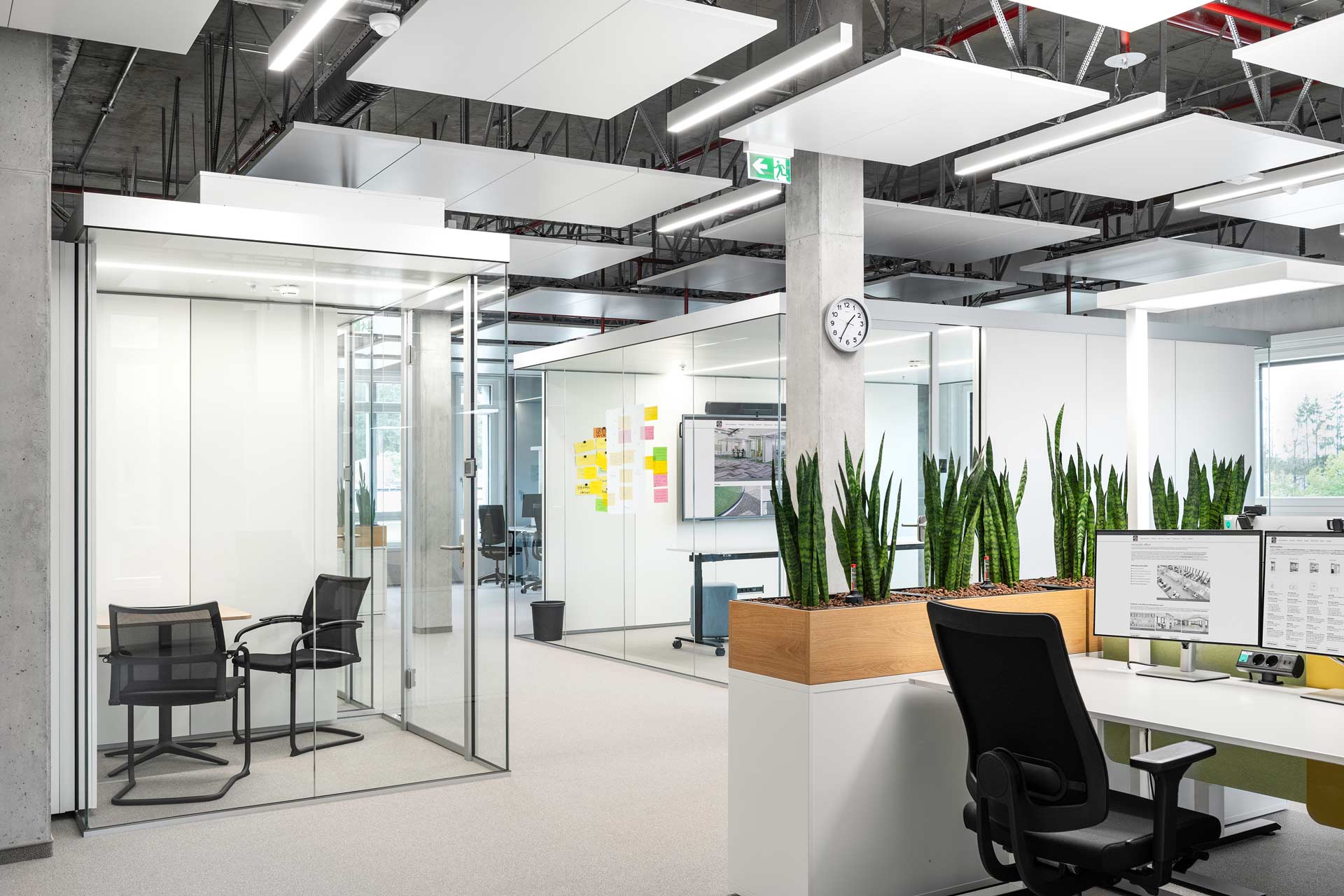
Acoustic and spatial structures help to create zones
Assigning areas to zones is the first step toward spatial structure. This structuring does not always necessitate the installation of walls. However, they often help achieve the desired "acoustic distance" within a limited total area. Different zones can thus function in close proximity to one another. Open-plan office spaces also require acoustic structuring. Sound screens or quiet modules, when correctly positioned, offer effective acoustic solutions without compromising the transparency of the spaces.
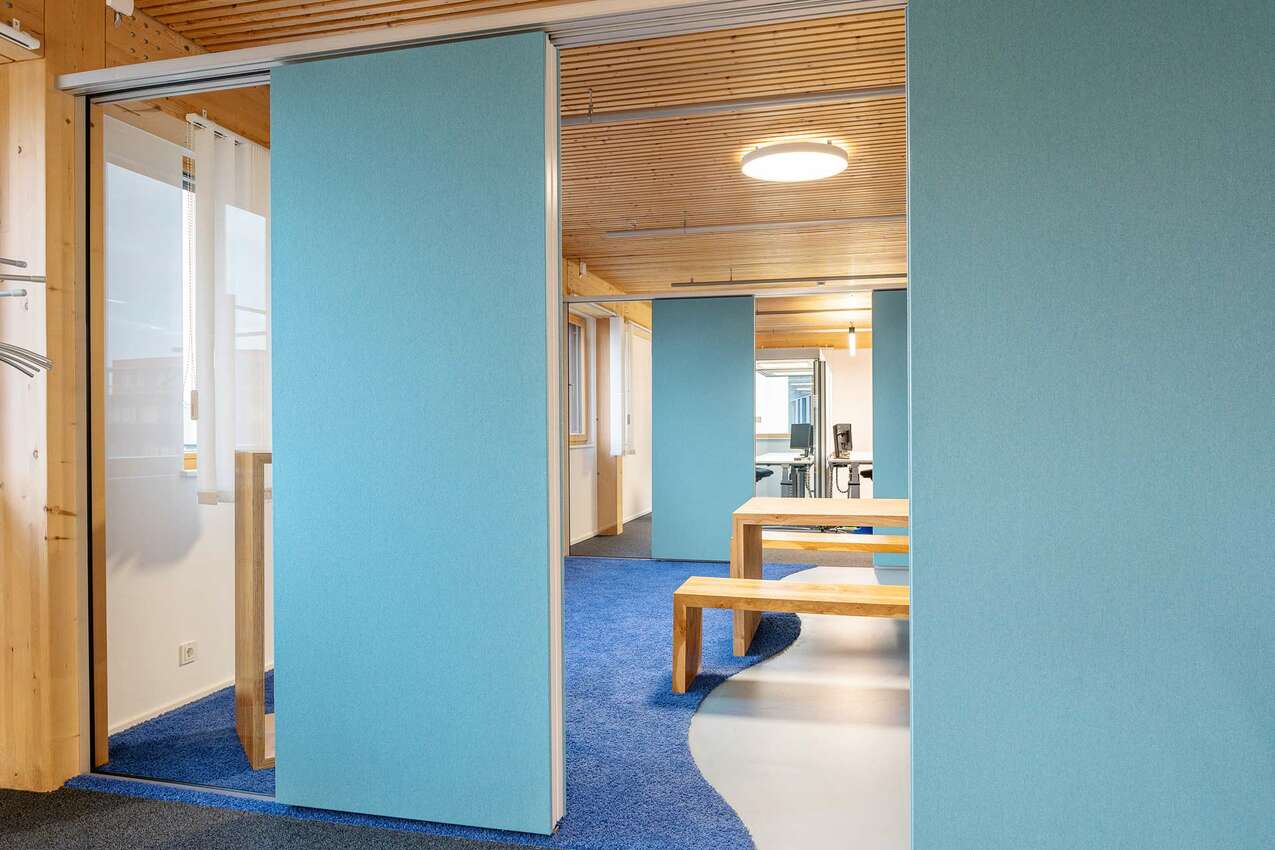
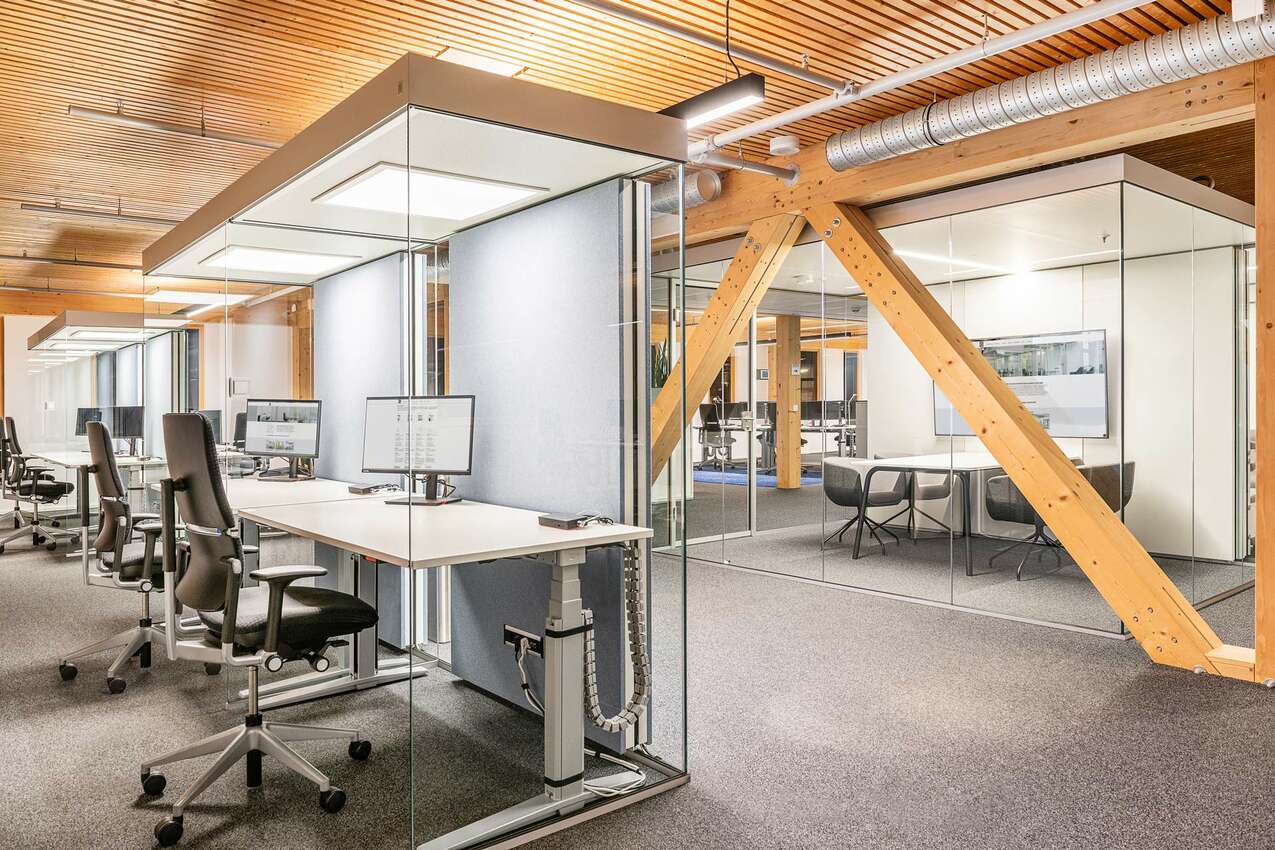
The transition between teamwork and concentrated individual work must be supported. To achieve this, the planner must create retreat areas. Room-in-room systems can offer flexible and space-efficient solutions for communication and concentration. They can be placed in sufficient numbers and in close proximity to the concentrative workstations. Clearly visible, easily accessible, and without booking scenarios, the room units provide the necessary retreat areas for teamwork and conferences.
Area
Space is expensive. This is especially true when it's centrally located. A small-scale office, with walls aligned to the building grid, always requires significantly more space than an open-plan office. Another crucial factor is the size of the desk. The difference between a 1600 cm or an 1800 cm desk can have a decisive influence on the density of the office. The same applies to cabinet furniture. A modern, agile office is paperless. Filing is the document management system. If the office is to become agile, then personal cabinet furniture such as sideboards and pedestals at the workplace no longer makes sense. A drawer under the desk holds the most necessary utensils. Documentation that still needs to be kept in paper form finds its place in central filing cabinets.
Conference rooms, at least the smaller ones for 3 to 8 people, don't belong on the facade. We need this space for the workstations. Employees don't want to sit in the central zone. Let's use this space for communication spaces. Room-in-room systems are self-ventilating. This opens up spaces that would otherwise be barely usable. They can be placed anywhere, even in the otherwise barely usable central zone. They can be easily relocated if necessary. In return, the space along the facade is cleared of conference rooms. This prime space is thus fully available for workstations, the "work space." This optimizes space efficiency.
Space
Light
Workplace ergonomics are significantly influenced by the quality of lighting. Professional lighting supports the well-being and health of employees. It is worth discussing whether uniform ceiling lighting should be used or whether a customized solution, such as a floor lamp, would be more appropriate. Modern luminaires can be equipped with presence sensors and offer the option of dynamic lighting, i.e., adapting it to requirements based on the amount of daylight. Biodynamic systems are still relatively new on the market.
Acoustics
Decision-makers must understand the relationship between sound dynamics, reverberation time, and sound insulation. Good acoustics are perhaps the most important key to effective office planning. Only a sound acoustic concept and a good acoustic structuring of the space pave the way to an open, future-oriented working environment. We deliberately use the term "acoustic structuring" here, because the usual reduction of reverberation time alone is not effective.
Spatial structures
It won't work entirely without spatial structures. Just think of the necessary retreat spaces. However, the spatial systems and their use in the planning process have a decisive influence on the resulting coding of the zones and the resulting office culture. Partition systems with a small amount of glass, such as drywall walls, cannot create an open, transparent, and thus communicative office culture. Glass walls, on the other hand—and especially frameless constructions—create modern and light-filled spatial situations. By using these systems, the planner intentionally strengthens direct visual relationships across the space, thus creating the basis for an agile and communicative office culture.
Furniture functions
We're talking about agile office spaces. Dynamic standing/sitting desks are a must here. It's also cost-effective to support employee health. Shelves and cabinets can also perform zoning functions. However, caution is advised here. Going beyond the necessary storage space burns up space. Seating, in particular, has a decisive influence on the coding of spaces. A meeting point or a work cafe might need bar stools. Another communication space might need lounge chairs. The library needs an open bookshelf with specialist literature. The recreation area doesn't need a beach chair, but it should still create a palpable sense of relaxation. A green wall or large-format acoustic images can make a big difference.
Floor:
Modern carpeting is the right choice for your office space. Carpeting offers enormous advantages in terms of impact sound insulation and smooth walking comfort for work spaces and communication areas in open-plan offices. Carpeting is credited with improving air quality by binding dust particles. Carpet systems are now available that claim to have an air-purifying effect. When choosing the right carpeting, consider carpet tiles. The advantages for the office are obvious. Access floors are particularly easy to maintain. Damaged areas or soiling are easy to repair. When making this decision, it's a good idea to consider future changes to the room layout and their consequences for the flooring. Modern office concepts are characterized, among other things, by distinct work areas. The flooring can support this concept, as it can also highlight traffic and escape routes.

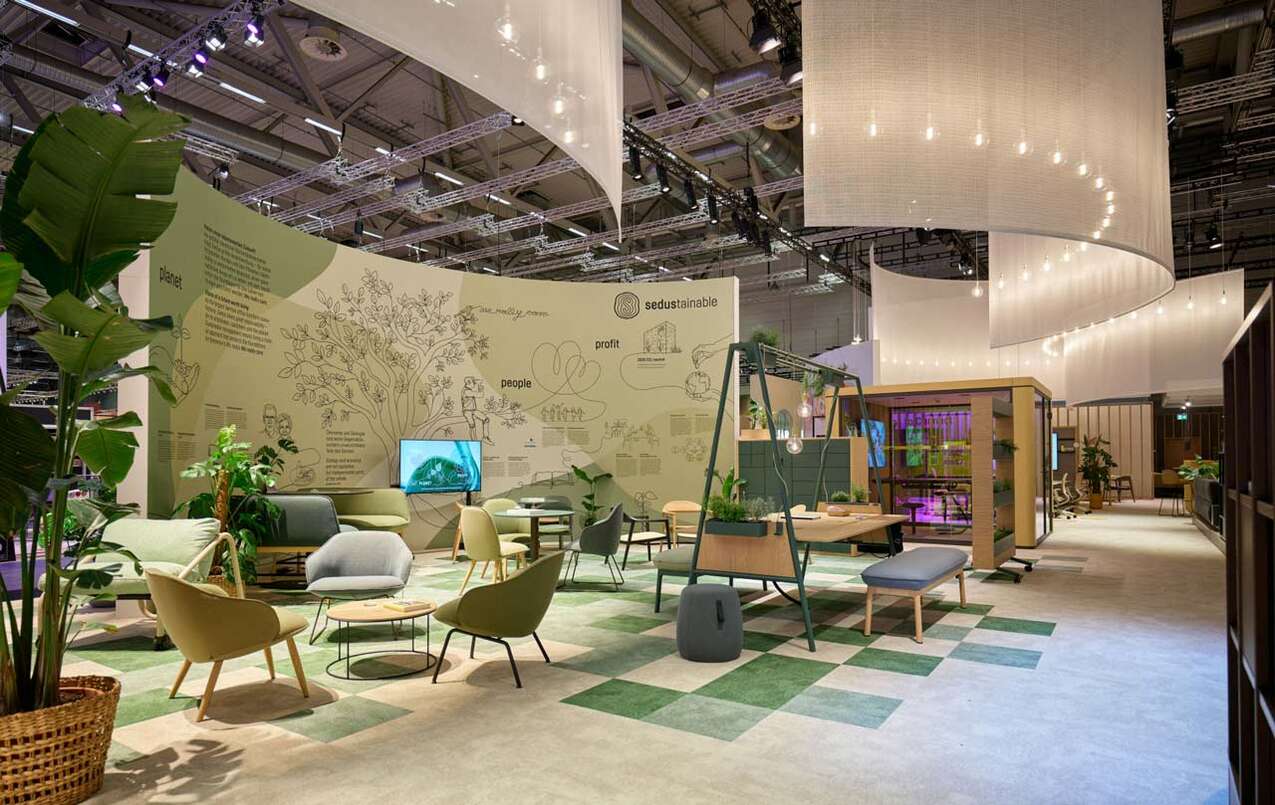
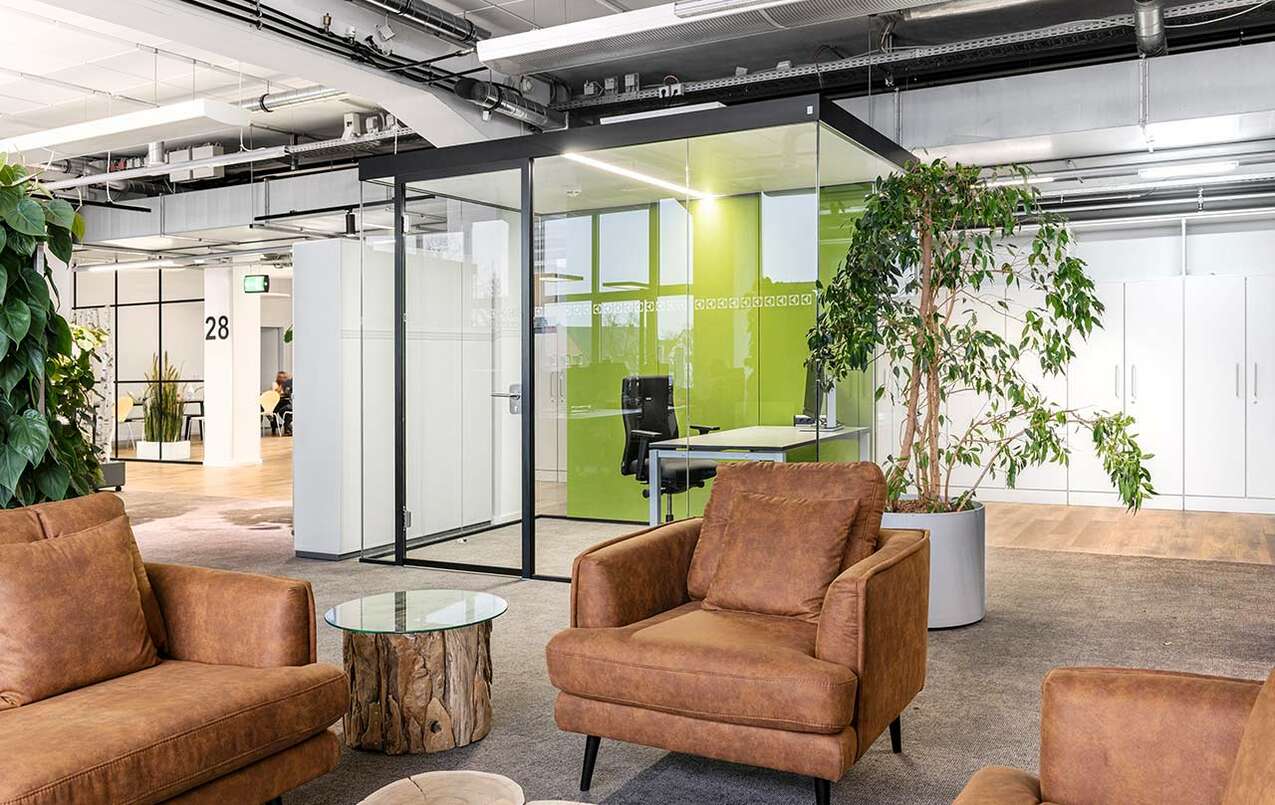
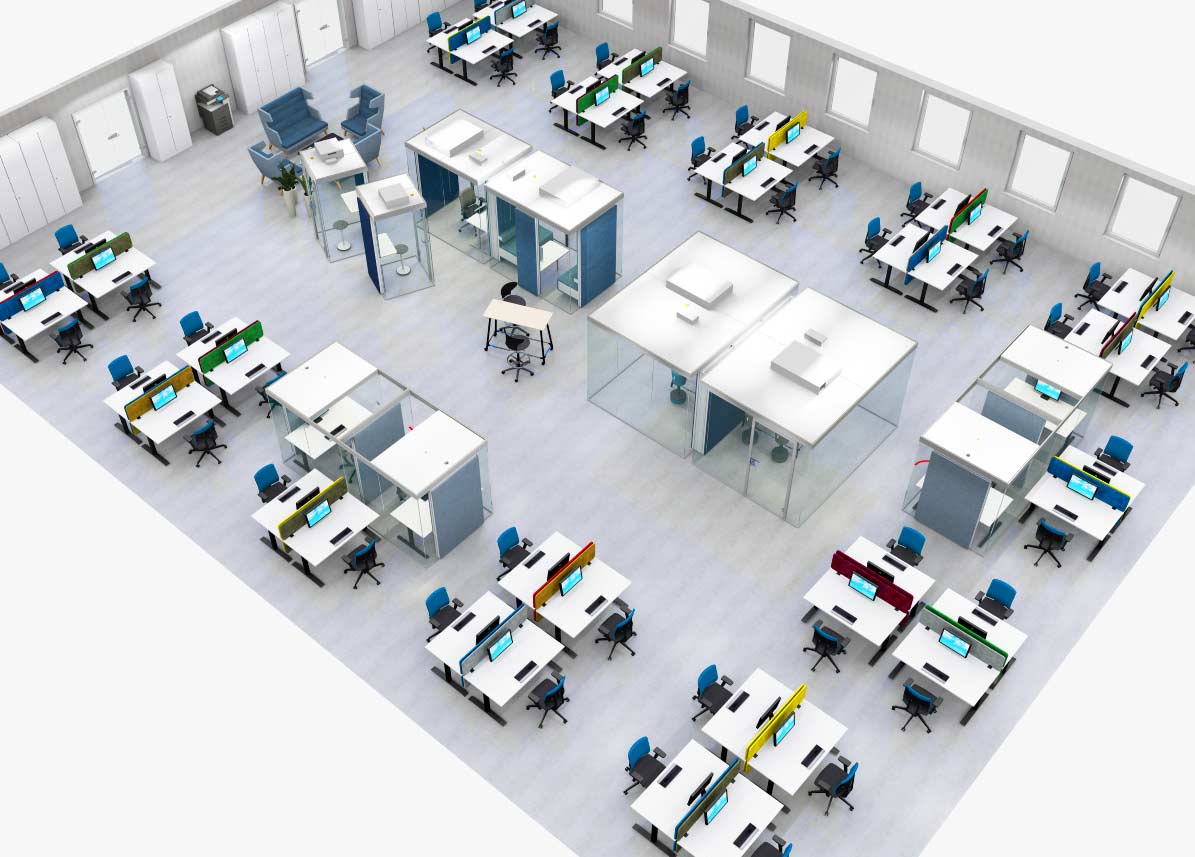
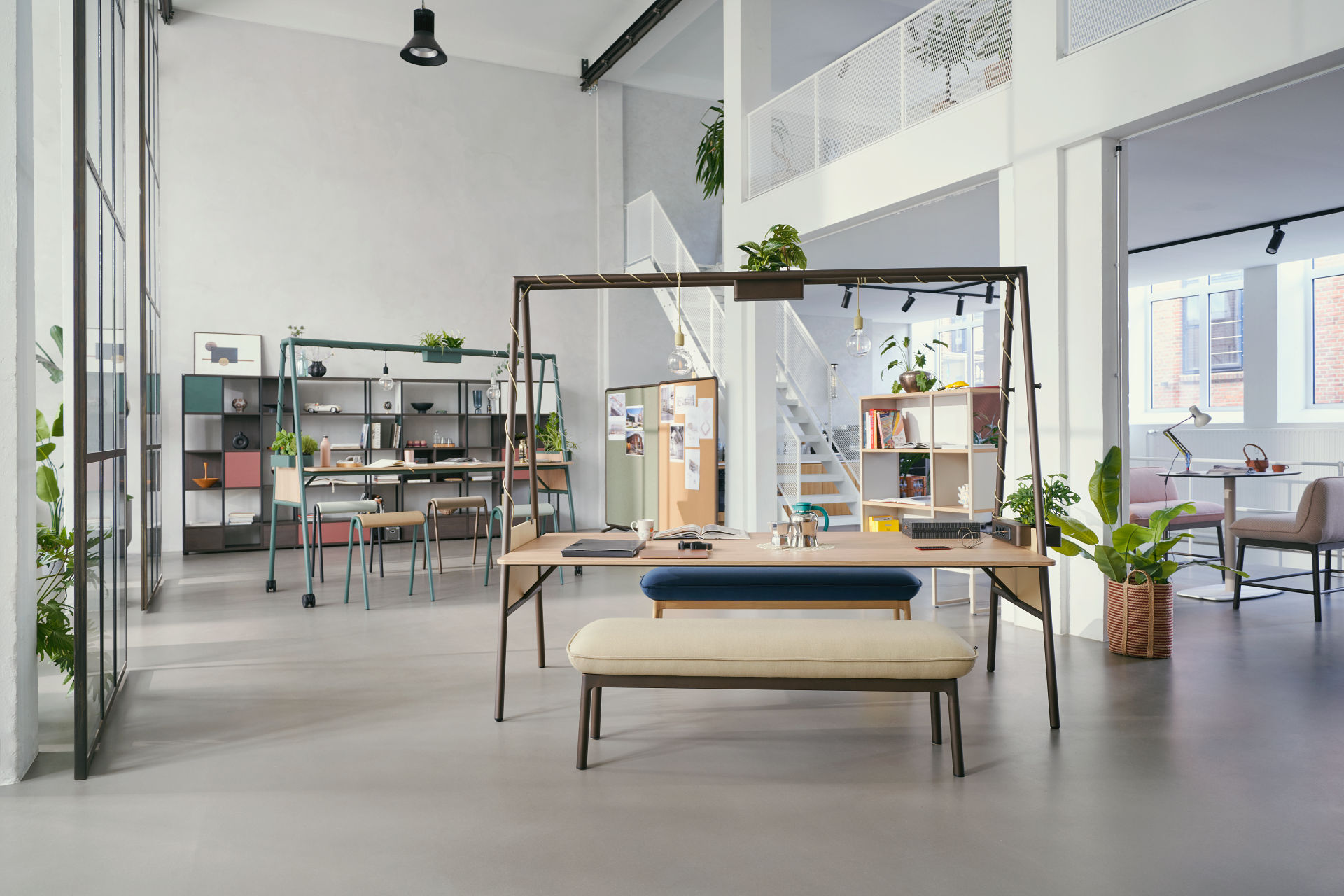

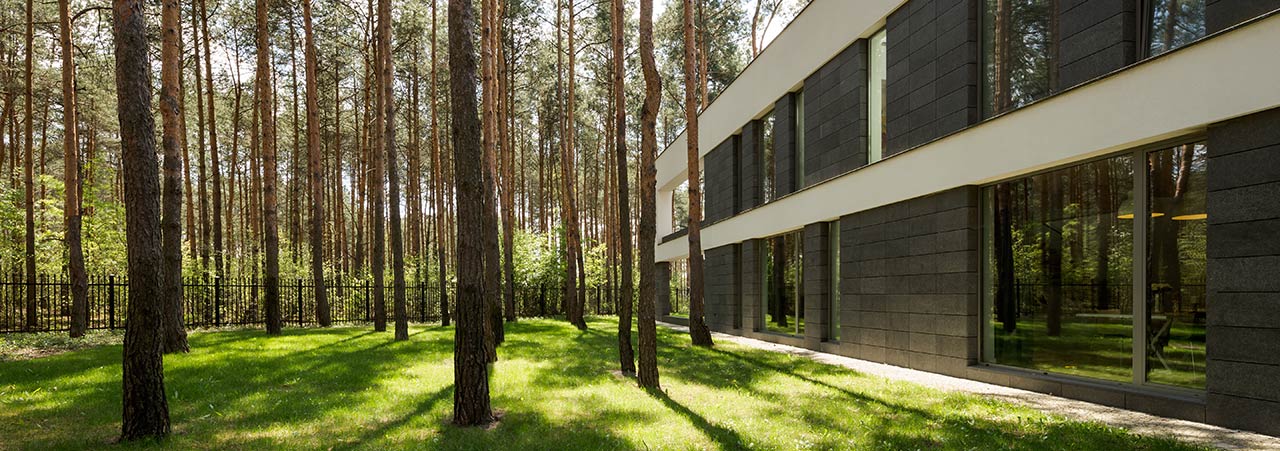




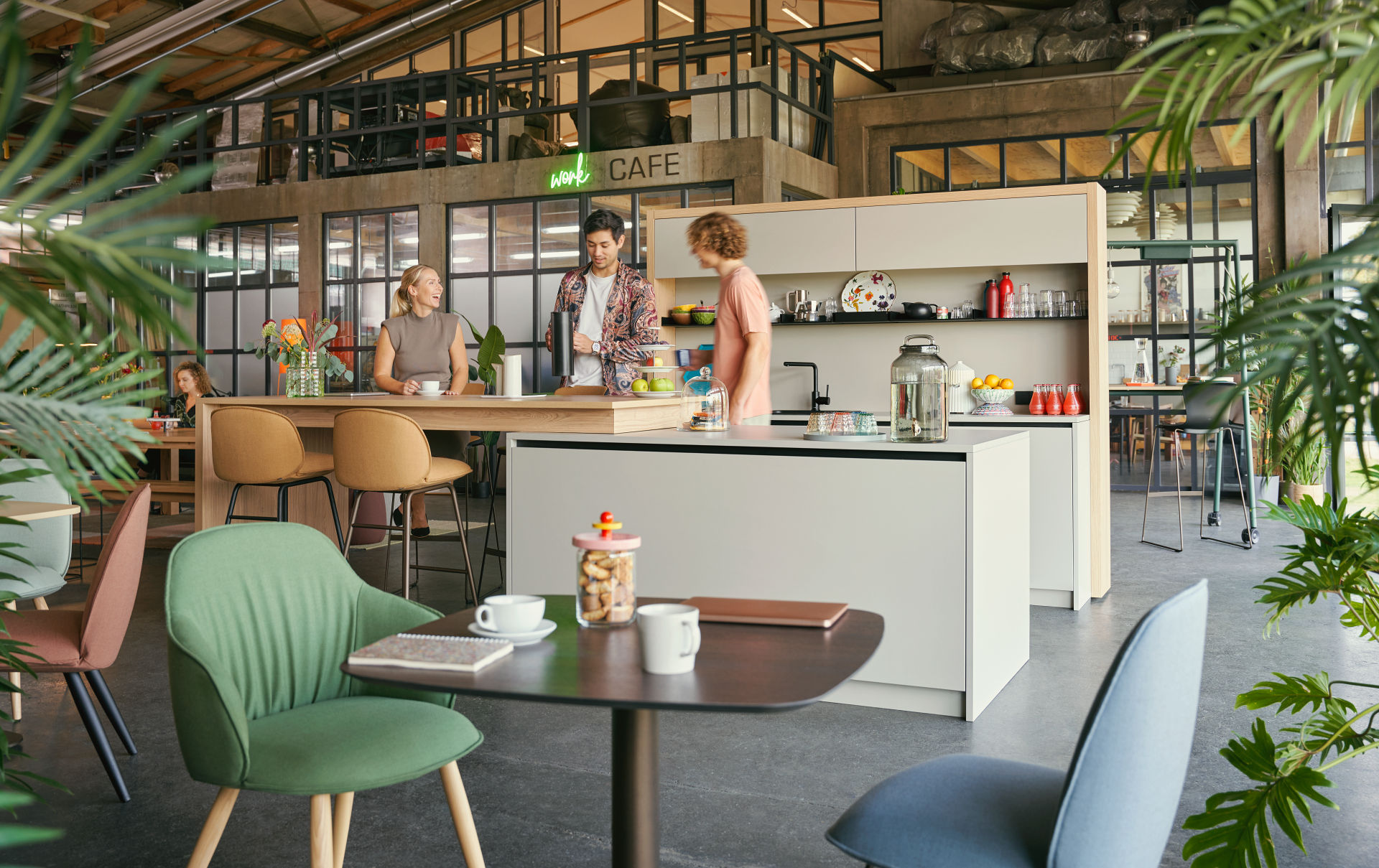
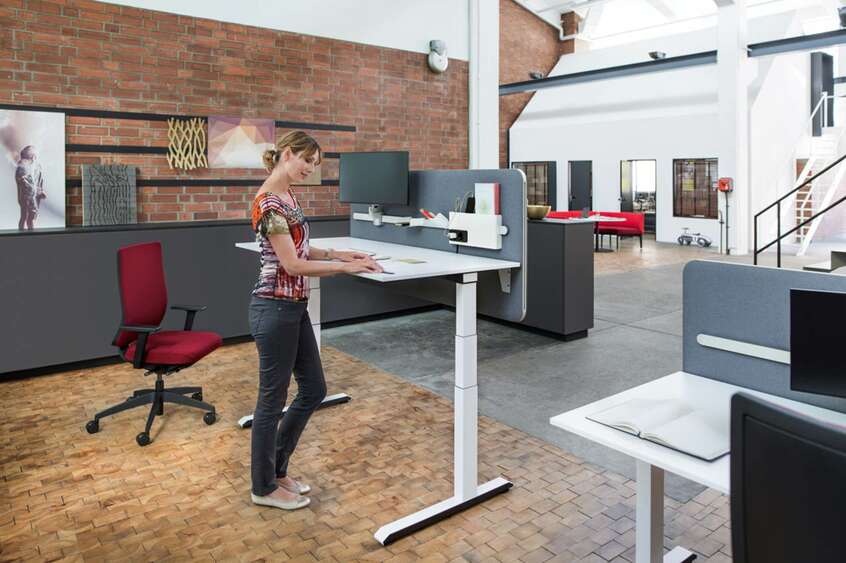
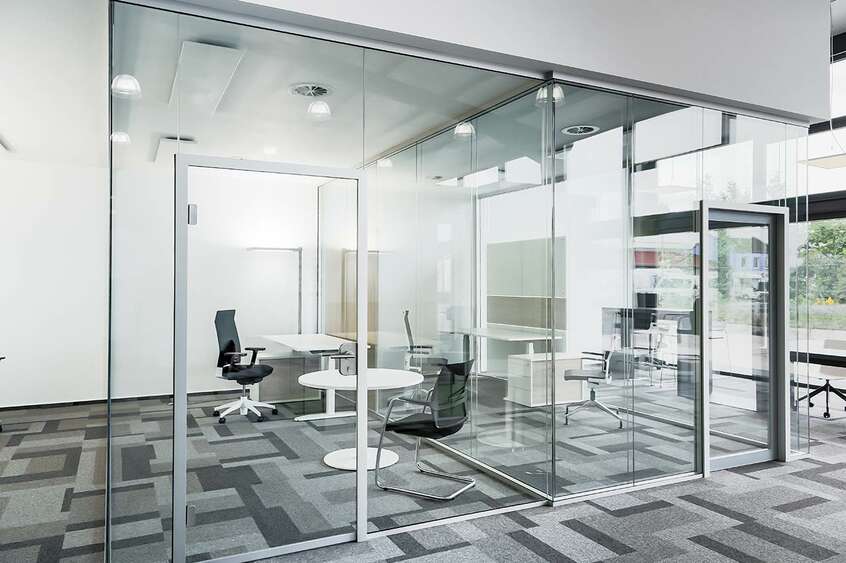
![office space planning library [Translate to english:] Bueroraumplanung informatives Solo](/fileadmin/_processed_/7/1/csm_Bueroraumplanung-11_d1ac2f8bee.jpg)
